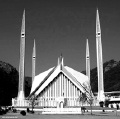Dr M Athar Khan
MADRASSAH as an institution is a means to achieve the education goal of the Ummah, which is implied in the Qur’anic injunctions of Iq’ra, Ilm, Ibaadah and Kasab (see article-3). Accordingly, the Institution of Madrassah aims to develop the powers and capabilities of man and inculcate in him Ilm of Huqooq Allah, Huqooq-e-Zaat and Huqooq-al-Ibaad”, so that the purpose of creation could be realized. Goal and objectives of Madrassah curriculum are, therefore, described in reference to overall functions of elements of the curriculum which define and set directions for all that is comprised in and relate to concepts (knowledge of basics of education), processes and activities of teaching and learning (organization of teaching and learning) and all of qualitative aspects (policies, processes, procedures, principles and methods) and quantitative means and facilities (instructional materials and equipments, Madrassah buildings and related facilities and services) in formal setting of any Madrassah organization.
Elements of curriculum of Madrassah, as of any system and institution of education include (1) goal and objectives of curriculum, (2) content, to be taught and studied for achievement of objectives of goals and objectives of curriculum, (3) means of Ilm, principles and methods to be used for teaching and (4) evaluation of overall functions of the curriculum, for which the achievements of the students are used as the criterion. Accordingly, the Madrassah – both as an institution and an organization within Ummah is subservient to its goals and subjected to the same laws and principles that regulate the Ummah for achievement of the purpose of creation of man as vicegerent of Allah on earth. First element of the curriculum the goal of Madrassah curriculum is, therefore, stated in terms of ‘implementation of principles of Islamic education’, rather than in terms of the targets to be achieved by teaching individual disciplines and subjects. The Islamic concepts, categorization and integration of Ilm as already explained earlier in this series of articles form bases for principles of Islamic education as they relate to the goal or goals of the Madrassah education curriculum.
These principles comprise the following: 1) Elaborating meaning and clearing concept of the subject matter by relating it with the realities of life and the world. 2) Developing in the student, discipline or subject related, knowledge capability and practicality. 3) Integrating discipline or subject categories of Ilm (discussed earlier as the integrated curriculum model-ICM). More specifically the Goal of Madrassah Curriculum is defined and stated in reference to the Qur’anic concepts of man, purpose of his creation on earth and the value and importance of Ilm for mankind to fulfil the purpose of his creation. The Al-Manahij Al-Darasiyah or the curriculum is a means to achieving the goal of education. Hence, the overall aim of the curriculum of the Madrassah is to accelerate and maximize development of man’s innate capabilities and qualities to their maximum, within the limits of awamir wa nawahi (sanctions and prohibitions) as specified in the Qur’an. Education discipline and subject objectives: The Qur’anic view of education disciplines and subjects teaching is closer to the view of the faculty psychology in that teaching of a subject is not for itself. However, the Qur’anic concept of Ilm means more than that and implies all of the related knowledge, applicability and practicality of an education discipline or a subject in thought and action. Besides, each education discipline and subject must make impacting influence on the related mental faculties and spiritual spectrum of the student. Objective of teaching an education discipline and a subject, therefore, is to: (i) Instil in the student knowledge and understanding of the subject, (ii) Understand and appreciate inter disciplinary and inter-subject integration and inter dependence of different disciplines and subjects, (iii) Develop in the student the related capability or capabilities for its use and application in the related field, (iv) Inculcate in the student the habit of practising it. (v)Augment related mental faculties and intellectual capabilities of the student and (vi) Strengthen spirituality and to broaden spiritual spectrum of the student.
Second element of curriculum (Al-Manahij Al-Darasiyah) includes all fields and areas of education. Fields of education as described earlier under the Integrated Curriculum Model (ICM) constitute a unified hierarchical order of language; religious knowledge, faith and beliefs; social sciences; mathematical sciences and natural sciences. The concept of Ilm, as such, rejects the modern view of specialization in a subject area, which minimizes (rather ignores) importance of other disciplines and causes interdisciplinary or even intra-disciplinary alienation between fields and areas of knowledge. The Islamic view of curriculum i.e. Al-Manahij Al-Darasiyah, therefore, provides for a broad-based integrated and graded subject curriculum at all levels of education, and more so, at the basic entry level education for a higher level education in any particular discipline or subject area.
A broad-based curriculum, of Madrassah to be constructed in accordance with the Integrated Curriculum Model should include all of the following discipline and subject areas as compulsory for the first twelve years of education, which must form prerequisite for entry to all areas and levels of professional education: 1) Language: Reading, writing, speech and grammar. 2) Religious knowledge: Qur’an—Nazira and Hif’z (reading and learning by heart), Tafseer (Exegesis of Qur’an), and Uloom-ul-Qur’an (Branches of knowledge of Qur’an). Hadith—Uloom-ul-Hadith (Branches of knowledge of Hadith). Fiq’h (Islamic jurisprudence: the legal foundation of Islamic religious). 3) Social Sciences: History, Geography, Civics, Political Science, Sociology, Psychology, Philosophy, Ethics, anthropology etc. 4) Mathematical Sciences: Arithmetic, Geometry, Algebra, Computer Science. 5) Natural Sciences: physics, chemistry and biology. 6) Auxiliary school subject activities to include vocational orientation programs, arts, crafts and forms of educational handwork that contribute to school subject activities. For example: calligraphy is a means to development of delicate finger muscles, dexterity and fineness.
—The writer is Prof & Advisor to the VC, Sarhad University, Peshawar.










